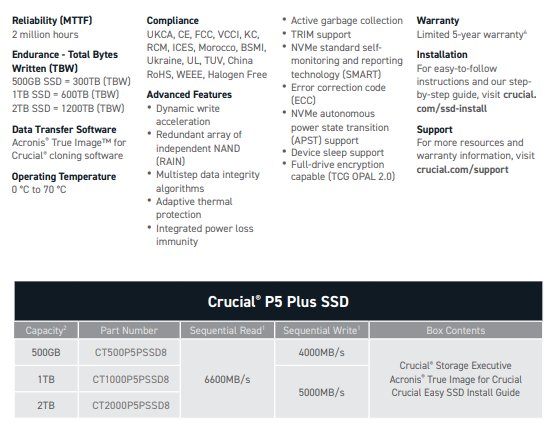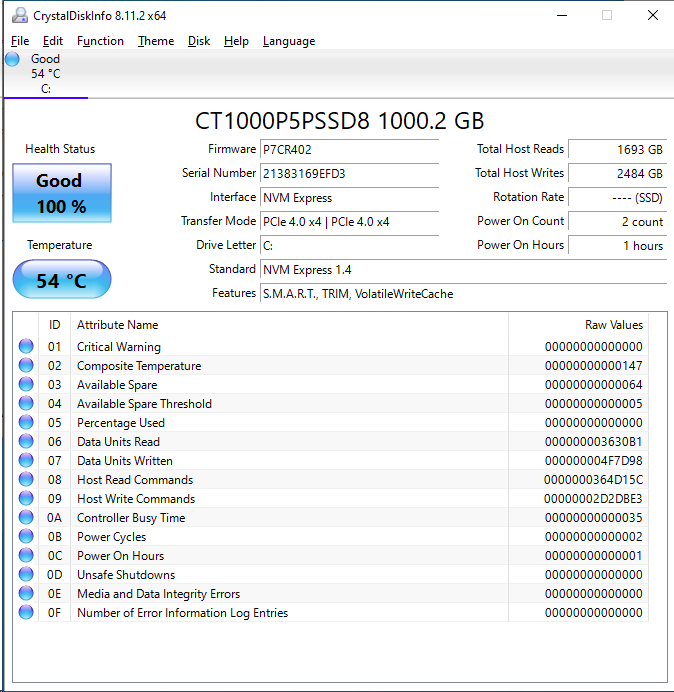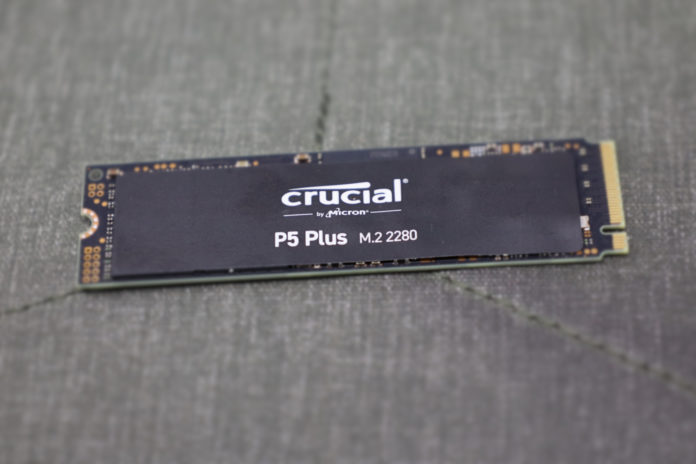Today we are taking a look at the Crucial P5 Plus 1TB NVMe SSD. This is Crucial’s PCIe 4.0 successor to their PCIe 3.0 P5 drive we reviewed last October. Over time the original P5 developed a respectable reputation as a good quality SSD. With the P5 Plus, Crucial is taking aim at competing with high-end PCIe 4.0 drives.
Crucial P5 Plus 1TB NVMe SSD
The Crucial P5 Plus 1TB comes in a single-sided M.2 2280 (80mm) form factor.

The top of the drive is home to all components. Much of the P5 Plus is comprised of in-house components; the NAND is 176-layer TLC by Micron, and the controller chip is also of Crucial design. Also present is a DDR4 DRAM cache. One interesting note is that a heatsink is not offered as an option with this drive; we will have to wait until thermal testing to see how that pans out.

The bottom of the drive has nothing except the product labels.
Crucial P5 Plus Specs
The Crucial P5 Plus line of SSDs come in at capacities between 500GB and 2TB.

Our review unit is the 1TB model and offers the top-end 6600 MB/s sequential read and 5000 MB/s sequential write performance. These rated specs are good, but not quite reaching the 7000+ MB/s ratings offered by the WD Black SN850 and XPG GAMMIX S70. The rated 600 TBW endurance seems to be the industry average for a quality PCIe 4.0 1TB SSD, and the 5-year warranty is also the standard for drives of this caliber. By the specs, the Crucial P5 Plus does not do much to stand out from the rest of the PCIe 4.0 SSD crowd.

CrystalDiskInfo can give us some basic information about the SSD, and confirms we are operating at PCIe 4.0 x4 speeds using NVMe 1.4.
Test System Configuration
We are using the following configuration for this test:
- Motherboard: ASUS PRIME X570-P
- CPU: AMD Ryzen 9 5900X (12C/24T)
- RAM: 2x 16GB DDR4-3200 UDIMMs
Our testing uses the Crucial P5 Plus 1TB as the boot drive for the system, installed in the M.2_1 slot on the motherboard. The drive is filled to 85% capacity with data and then some is deleted, leaving around 60% used space on the volume.
Next, we are going to get into our performance testing.





Are the fluctuations and peaks in the sustained write performance graph the result of thermal throttling or cache effects?
What about “Integrated power loss immunity” feature? Is there supercapacitor on board, or how is it working? What I have understood, is that this feature is not common on M.2 drives, or perhaps not exist on any other M.2 drive. I think this would be superb drive for low budget server.
Qué consumo tiene en reposo? parece ser que es muy alto, sobre 1,3w mientras que los de la competencia están por 0,003w.